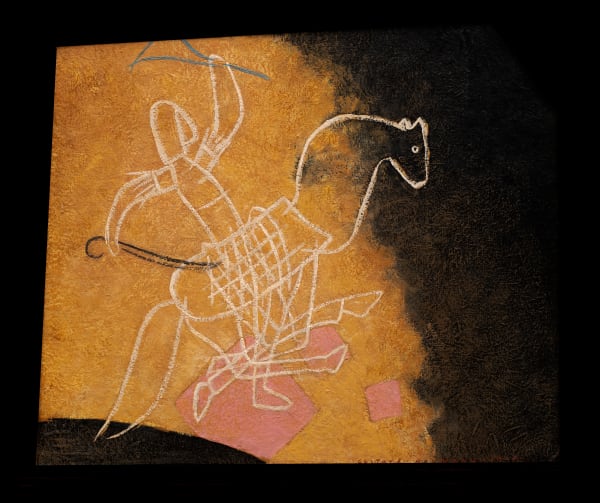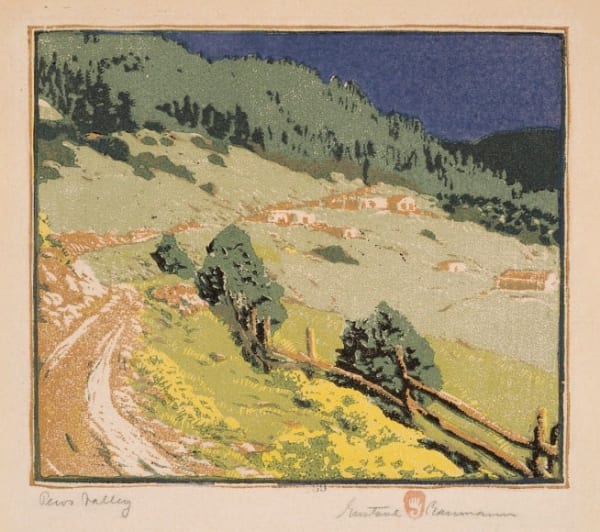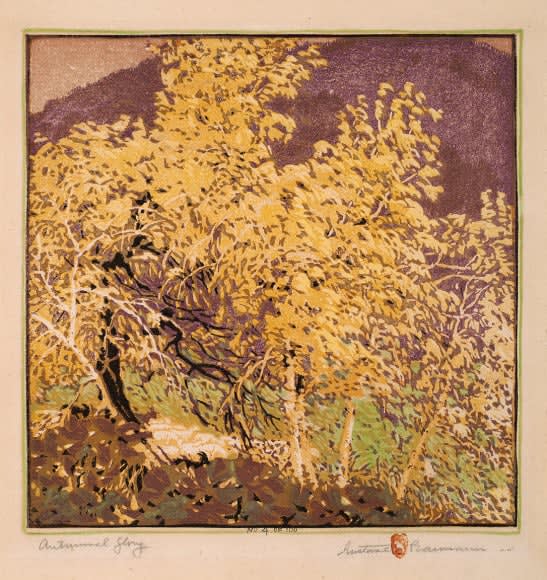-

Installation views of Gustave Baumann works on view at the Owings Gallery on East Marcy Street
-
Gustave Baumann (born June 27, 1881, Magdeburg, Germany - died October 8, 1971, Santa Fe, New Mexico, US) is considered one of the most significant color woodblock printmakers of the 20th century. His work has become synonymous with the American Southwest, particularly New Mexico, where he lived and worked for over fifty years. The rich landscapes and unique cultural elements of the West provided the subjects for the majority of his prints, cementing his reputation as an iconic American artist.
Though Baumann was born in Germany, he immigrated to the United States in the early 1900s. After a brief period in Chicago, he moved to Brown County, Indiana, in 1910. It was during a visit to New Mexico in 1918 that Baumann first encountered the landscapes and culture that would deeply influence his art. He made Santa Fe his permanent home in 1919, where he created many of his most celebrated works. Baumann's images of New Mexico-particularly scenes of Santa Fe-have become iconic and are highly sought after by collectors.
-
 Madison SquareColor woodblock print13 3/4 x 11 inchesNo. 33 in an edition of 100
Madison SquareColor woodblock print13 3/4 x 11 inchesNo. 33 in an edition of 100 -
 ProcessionalColor woodblock print with silver leaf13 ¾ x 12 ¾ inchesNo. 65 in an Edition of 120
ProcessionalColor woodblock print with silver leaf13 ¾ x 12 ¾ inchesNo. 65 in an Edition of 120 -
 Aspen Money, d. 1946Color woodblock print, State II13 ½ x 12 7/8 inchesNo. 62 in an Edition of 125
Aspen Money, d. 1946Color woodblock print, State II13 ½ x 12 7/8 inchesNo. 62 in an Edition of 125 -
 From Hillside Gardens, d. 1941Color woodblock print with silver leaf13 1/2 x 12 3/4 inchesstate II, No. 51 in an Edition of 125
From Hillside Gardens, d. 1941Color woodblock print with silver leaf13 1/2 x 12 3/4 inchesstate II, No. 51 in an Edition of 125
Gustave Baumann
Current viewing_room



















